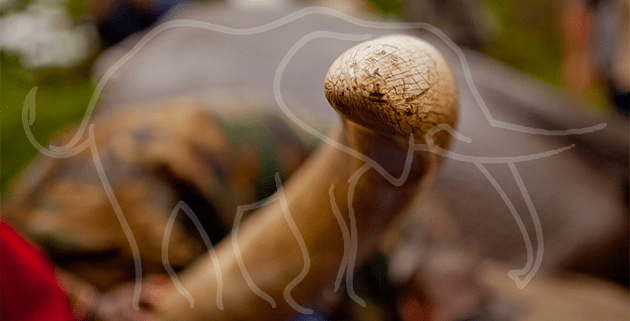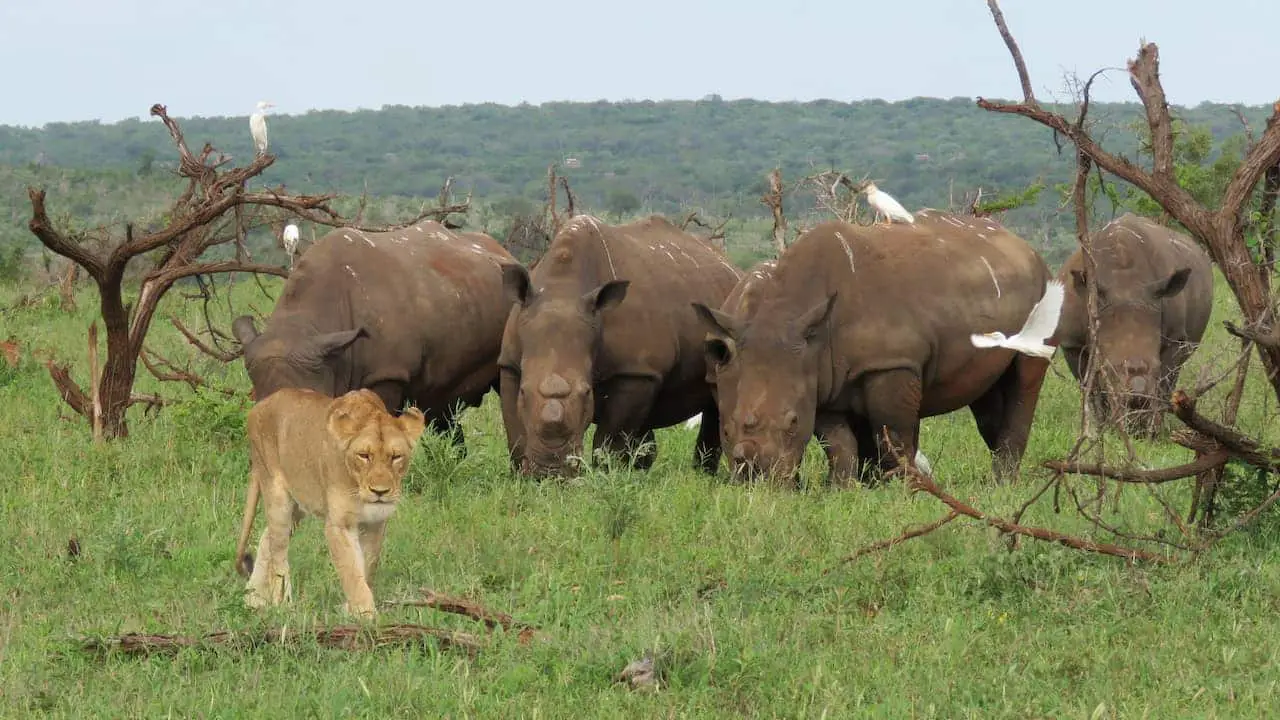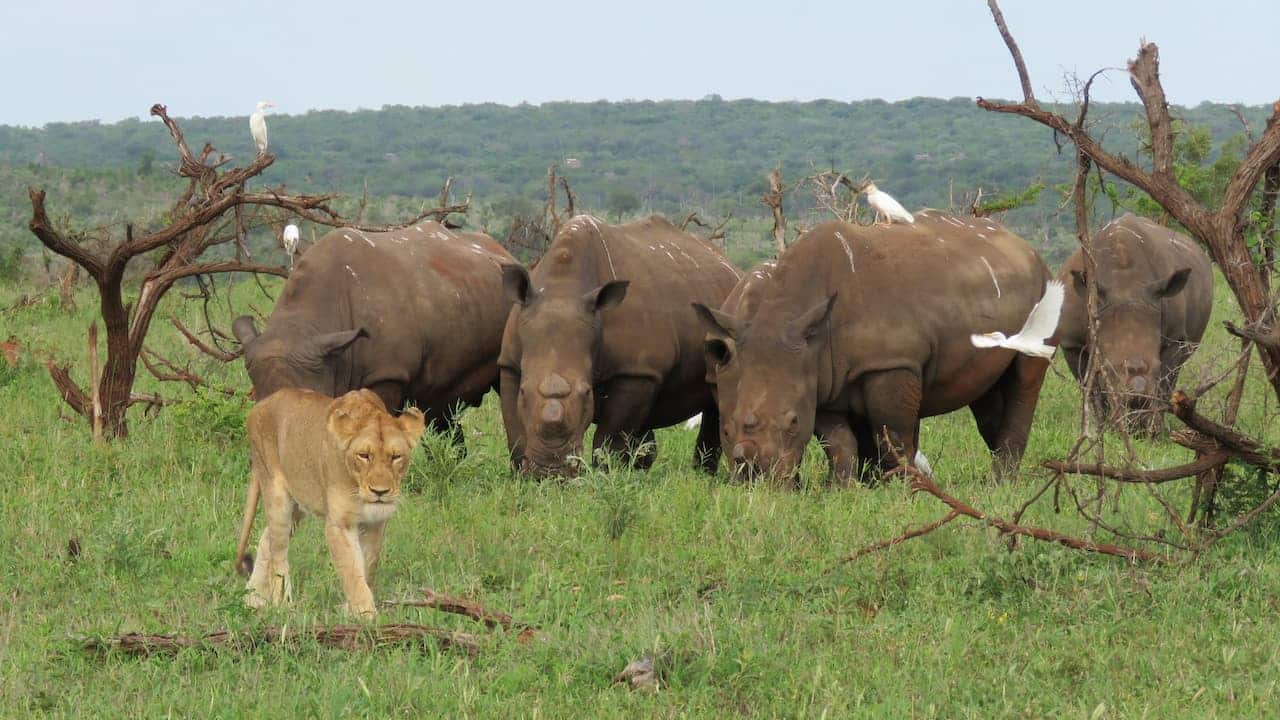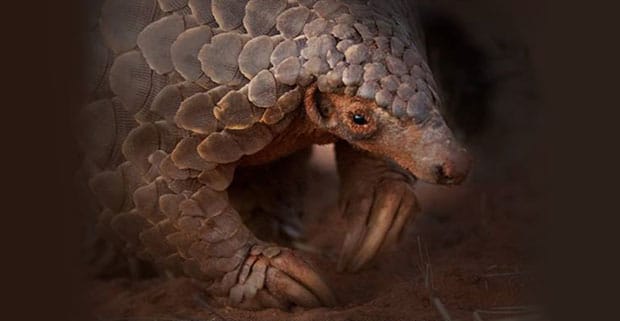To Breed, to Dehorn or to Poison?
The debate on how best to conserve Africa’s dwindling rhino population rages on. Is flooding the market with legally harvested rhino horn an option or is injecting poison into the horns of wild rhino a better option? Asks Des Langkilde.
1,657 Rhinos have been killed for their horns in South Africa alone since 2010 and despite the arrest of 717 poachers over the same period (refer table below), the illegal trade seems to have no end in sight. Rhino horn is prized for its use as an aphrodisiac and hangover remedy among elitist Asian society – fetching up to US$55,000 per kilogramme in Asia — a price that can exceed the U.S. street value of cocaine, making the hoof-like substance literally as valuable as gold, but as useful a health remedy as the hair on your head.
Despite rhino horn’s proven uselessness as a medicinal aid, the demand is so great that thieves are stealing rhino horns from European museums and taxidermy shops, sometimes smashing them off with sledgehammers before fleeing. According to Europol, the European law enforcement agency, 72 rhino horns were stolen from 15 European countries in 2011, the first year such data was recorded.
The challenge faced by conservationists is how to preserve this species from rapid extinction. This article explores a few of the more popular approaches.
Farmed Horn Harvesting
Writing in the journal Science, lead researcher Duan Biggs and his colleagues contend that humanely shaving the horns of live rhinos could produce enough horns to meet global demand.
According to the scientists, rhinos grow about 0.9 kilograms of horn a year and contend that “farming” rhinos to “harvest” their horns would only pose minimal risks to the animals. A central selling organization could oversee the legal harvest and sale of rhino horn, which would sell for less than on the black market. A DNA- fingerprint could be taken from the horns’ shavings and make them traceable worldwide.
John Hume is a South African game farmer who owns more than 700 rhinos. He’s part of a group of entrepreneurs who agree with the findings of Biggs.
“We take wool from sheep, why not horn from rhinos?” Hume asked National Geographic. “If you cut the horn about three inches above its base, it will grow back in two years. That means there is a never ending supply of rhino horn if we’re smart enough to keep the bloody animals alive.”
Hume is frustrated with South African laws that require hunters to kill rhinos in order to export the horns as a trophy. He explains a few reasons for this law:
Among the misconceptions, Hume says, is that ivory and horn are the same. Ivory is an elephant’s tooth, while rhino horn is keratin, similar to a horse’s hoof. When an elephant’s tusk is severed, the nerve inside can become infected, killing the animal. Also, darting an elephant is much more dangerous than darting a rhino, because of its greater size and the protectiveness of its herd.
Hume also disputes the charge from conservationists that the legal and humane harvesting of rhino horn will simply encourage poachers. He believes as more legal horn enters the market, poachers will be driven out of the business by decreasing profits – eventually it just won’t be worth risking the jail time. “The fundamental difference is that poachers go after rhino horn for easy short-term profit. Farmers are in it for years of steady returns.”

Dehorning
According to Save The Rhino, Namibia was the first country to use dehorning to protect rhinos from poaching. Between 1989 and the early 1990s, dehorning coupled with rapid improvements in security and funding for anti-poaching was perceived by stakeholders to have contributed significantly to reducing poaching losses. However, for dehorning to be effective, it must be coupled with extensive anti-poaching security and monitoring efforts as poachers will still go after the stub of horn that is left after removal due to the current high prices and demand for rhino horn. Poachers may also kill dehorned rhinos out of vengeance. In Hwange NP, it was thought that poachers killed dehorned rhinos, to avoid tracking them again.
Just days after completing a dehorning campaign on all adult rhinos at Nambiti Private Game Reserve at Elandslaagte, near Ladysmith in KwaZulu-Natal, the reserve lost two sub-adult males in February 2013, as both were too immature for the procedure. “The fact that the older dehorned rhinos were untouched is proof that the procedure, performed in the best interest of the rhinos, was successful,” said Rob Le Sueur.
Horn Poisoning, Dye and Microchiping
Toxic infusions are the latest weapon to counter rhino poaching in the big game areas adjoining South Africa’s Kruger Park.
Consumers of the powdered horn in Asia risk becoming seriously ill from ingesting a so-called “medicinal product” which is now contaminated with a non-lethal chemical package. The 49,500 hectare Sabi Sand Wildtuin has launched the country’s first large-scale operation to toxify the horns of its rhinos, together with an indelible pink dye which exposes the illegal contraband on airport scanners worldwide.
The Sabi Sand Wildtuin Association (SSWA) rhino horn toxification campaign, is as much about sending a message to the illegal trade worldwide as it is about rendering the rhino horns inside its perimeter both worthless and hazardous as traditional medicine.
Andrew Parker, CEO of the SSWA, says that compromising the product is the most effective deterrent to the illegal market.
“Sabi Sand is leading this programme because we are located at the epicentre of the problem at the southern end of the Kruger Park, which suffers up to 70% of the rhino killings. Poaching syndicates are here in large numbers and we are vulnerable as a western buffer between them and the Kruger Park.”
The only possible danger to rhinos having their horns infused is the stress caused by being immobilised. For this reason, says Andrew Parker, the Sabi Sand treatments are performed outside the hottest part of the day, and the animals are brought round as quickly as possible. The toxin-dye injections are administered into the horn’s inert (painless) keratin by compressed air.
The Rhino Rescue Project’s Lorinda Hern explains that the toxin is a compound of parasiticides, which are used to control ticks on farm animals like horses, cattle and sheep. It is also ox-pecker friendly. While the treatment is for the benefit and improved health of the animals, she said, it is toxic to humans. Symptoms of ingesting the drug cocktail – in powdered rhino horn, for example – would include nausea and vomiting.
Says Andrew Parker: “We are not aiming to kill the consumers, no matter what we think of them. We want to kill the illegal trade, which is preying on our herds. Once the poachers discover that rhino horn from Sabi Sand has no value they will move on. Once the risk/reward balance changes, making incursions against our own very experienced security counter measures will no longer be worth the risk.”
The Rhino Rescue Project was founded by Ed Hern, owner of the Rhino and Lion Nature Reserve near Johannesburg, after a poaching incident at the end of May 2010, when he contemplated many methods of fighting the poaching scourge: from de-horning of animals to microchips and tracking devices. The problem he found with all of the alternatives, however, was that they were largely reactive instead of proactive, and did not deter poachers from striking again.

Logically, a permanent solution is to eliminate the demand for rhino horn altogether. To this end, the Endangered Wildlife Trust (EWT) announced in March 2013 that it had partnered with Education for Nature – Vietnam (ENV), a Vietnamese non-profit NGO, to develop a hard hitting rhino protection campaign for countries where rhino horn is in great demand, starting with Vietnam.
“We are certain that our campaign, with this crucial buy in from a respected and well known Vietnamese NGO, will help us to turn the tide on the plight of the rhino. Our message: Say NO to rhino horn” said Rynette Coetzee, Project Executant of the EWT’s Law and Policy Programme. The campaign consists of posters, media outreach and an online component and will be executed in both English and Vietnamese.
Education will go a long way towards teaching consumers that rhino horn contains no nutritional or medicinal value, however, education will not produce an immediate result, and results are what we need at this point.
Initiatives to save our rhino from extinction abound and are commended for their passion and sincerity, such as our Rhino Knights feature article in this edition of the Tattler.
But some initiatives take the cause to the extreme, such a recent pledge campaign that reads; “Since we all know that Rhino horn is made of KERATIN – the same substance as finger and toe nails – we would like you to join us in sending your nail clippings to South Africa by the next COP meeting in 2016. This gives everyone enough time to start saving them from now on.” The campaign already had 585 pledges at the time of writing this article! You can make your nail clipping pledge here.
All comments on this article will be published in the June edition.







